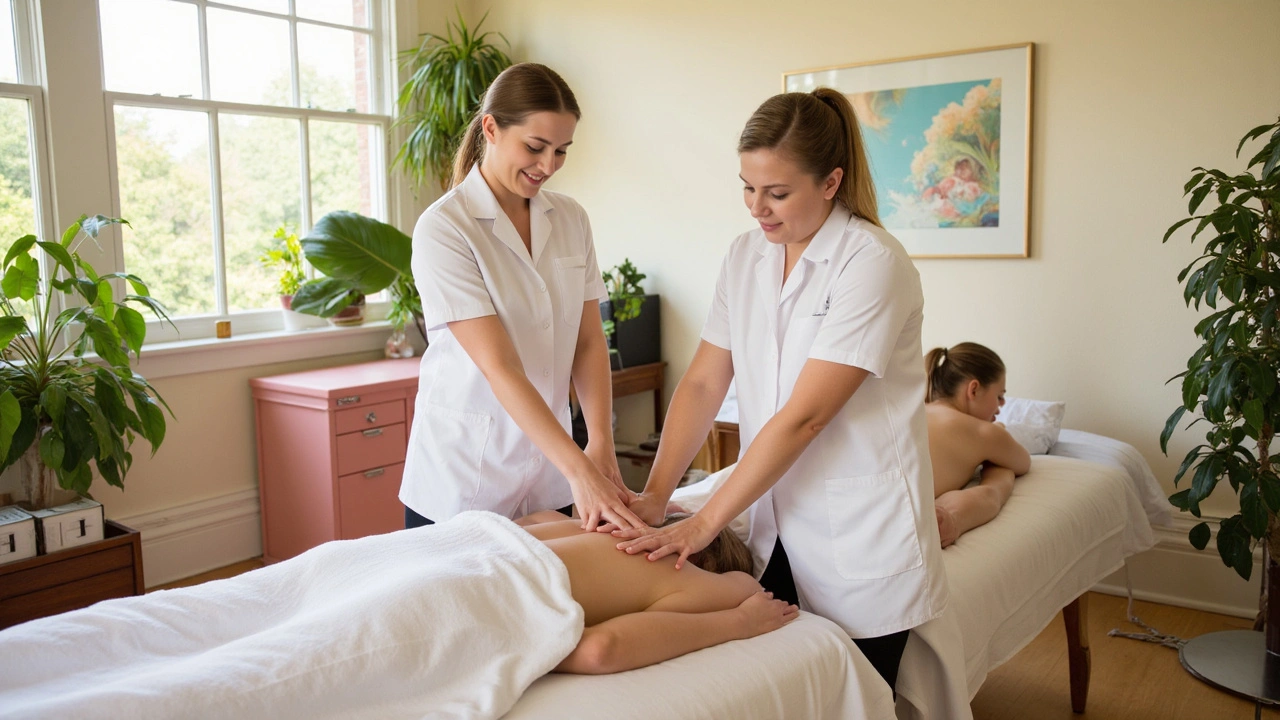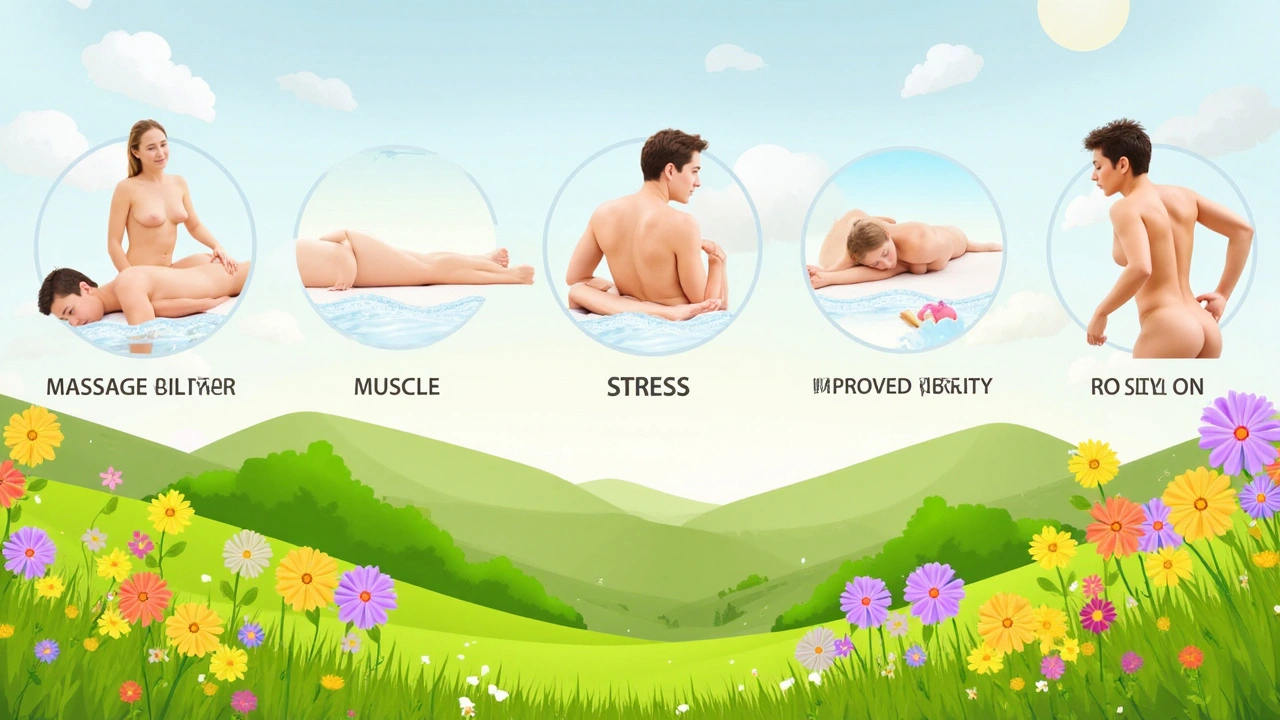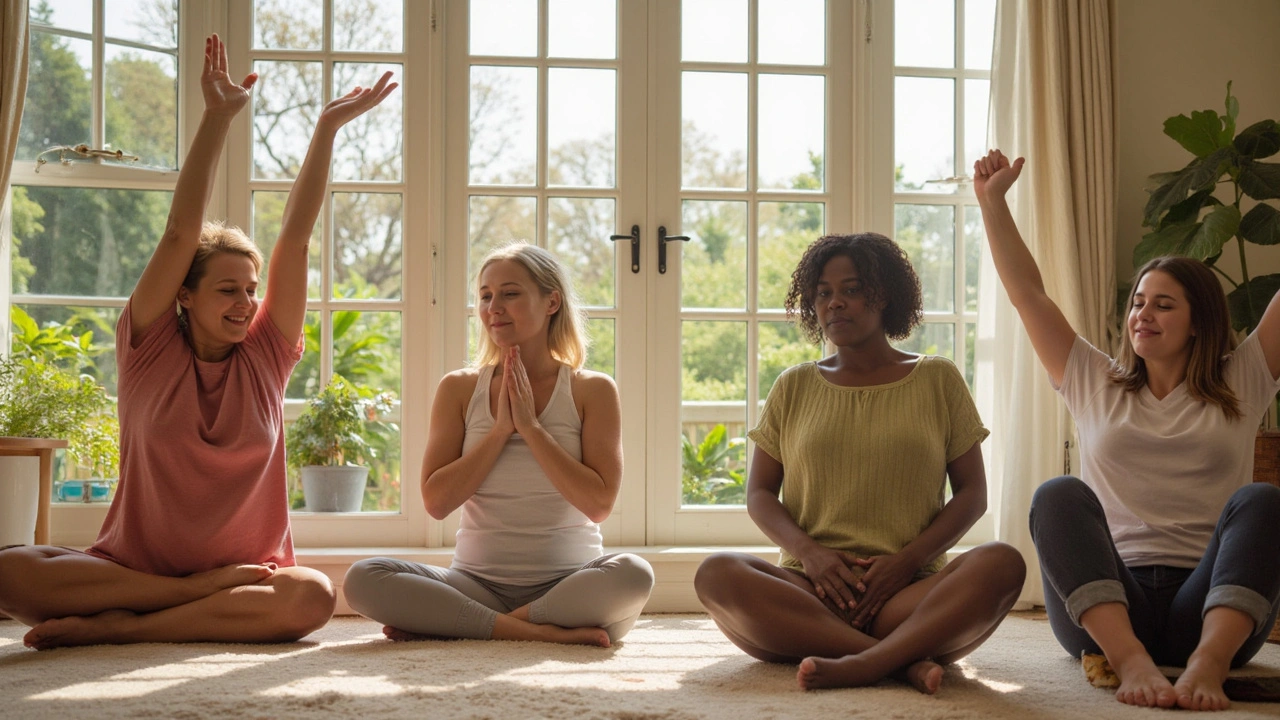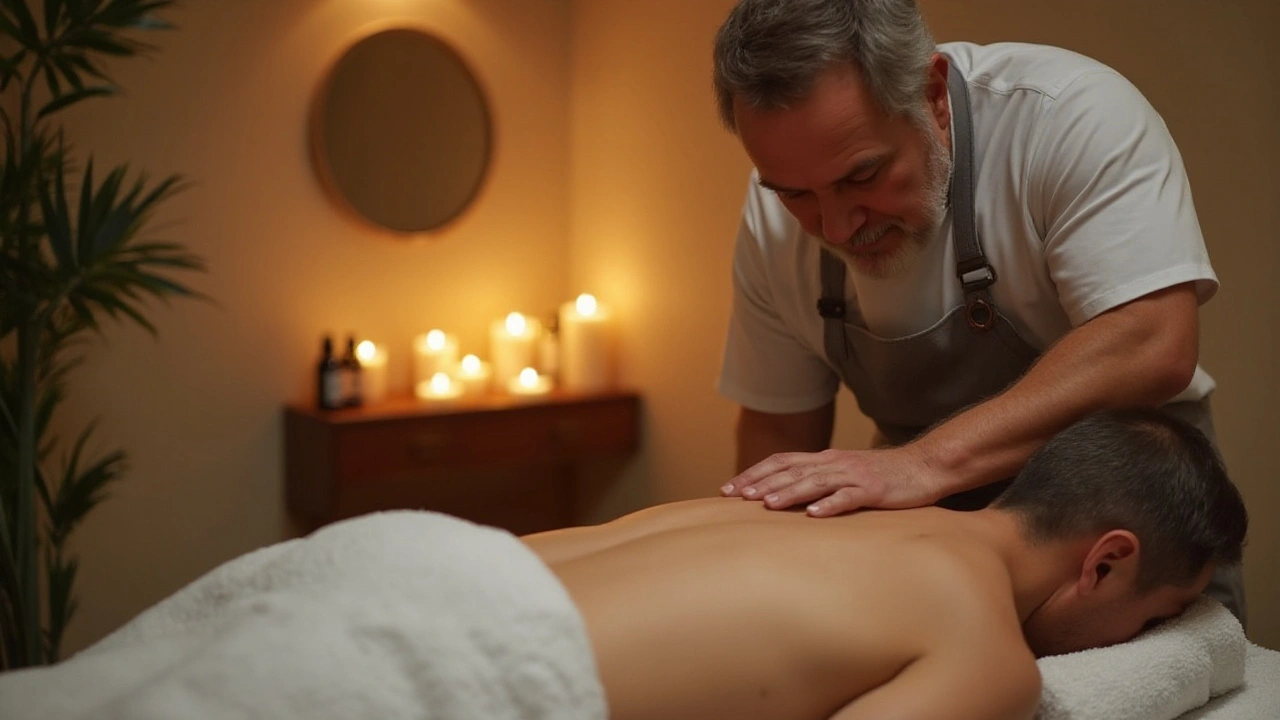Massage Therapy Techniques: How to Choose the Perfect Style for You

Funny thing—most people think all massages are pretty much alike, just with a little more or less pressure. But if you grab your phone, book a session, and barely remember what you picked, you’re missing out on a world of difference. It’s not just about relaxing: each massage style does something unique for your body, mind, and health. If you keep waking up stiff, dealing with endless desk-job tension, or just want to spoil yourself, knowing the ins and outs of common massage therapist techniques will save you time, money, and, honestly, disappointment.
Breaking Down the Most Popular Massage Therapist Techniques
Let’s start simple: not every massage therapist uses the same playbook. That’s good news for you—no matter your body type, pain level, or favorite way to unwind, there’s a method tailored to your needs. Yet, most people can’t name more than two techniques without looking them up. Here’s what really goes on behind those closed doors (no “fluffy” spa talk, promise):
- Swedish Massage: Think of this as the tried-and-true beginner favorite—long, gliding strokes, gentle kneading, and rhythmical tapping. It’s the gold standard for stress relief and basic muscle relaxation. The American Massage Therapy Association actually reports this as the most requested style in the U.S. It boosts blood flow, which helps your body recover faster from tension and the low-level aches caused by daily grind.
- Deep Tissue: If you wince at back pain just from sitting at your desk, this one goes straight for the sore spots. Deep tissue therapists use focused, slow motions to dig below the surface. It’s the go-to for chronic tension, muscle knots, or injuries. Don’t expect a gentle session—this one can leave you sore for a couple of days, but the payoff kicks in after the muscles reset.
- Sports Massage: Designed for athletes (or honestly, anyone who exercises more than occasionally), this blends Swedish and deep tissue techniques to target your specific trouble zones. It’s customized—if you’ve got runners’ knees or tennis elbow, sports massage zeroes in on those. Some Olympic athletes swear by regular sessions to speed muscle repair and prevent injuries.
- Trigger Point Therapy: Got pain that hits just the right (terrible) spot? This approach tracks down those notorious knots—you know, those sharp, tiny pain points that radiate out. The therapist presses directly on the trigger (with your input), coaxing it to release. You’ll feel intense sensation, but when the pain ebbs, the relief can feel almost magical.
- Shiatsu: If you want something a bit off the Western menu, shiatsu is Japanese for “finger pressure.” Practitioners use thumb and palm pressure, tapping, and stretches, working along your body’s energy pathways (meridians). It’s meant to get your energy flowing smoothly, and people often claim it feels energizing instead of just relaxing.
- Thai Massage: Forget lying still—this is like yoga meets massage. You’ll be pulled, stretched, twisted, and prodded while on a floor mat. Great if you want more flexibility, body awareness, and seriously deep release. It’s not everyone’s cup of tea, but it’s a favorite among people who get restless during traditional sessions.
Surprising fact: According to a 2023 Statista survey, 42% of Americans who received massages said the biggest reason they booked was for medical or pain-related issues, not pampering. That means more people than ever are turning to these techniques for real results.
| Massage Type | Main Benefit | Session Length (avg) | Ideal For |
|---|---|---|---|
| Swedish | Stress relief, overall relaxation | 50-60 min | First-timers, anyone with mild tension |
| Deep Tissue | Chronic pain, muscle knots | 60-90 min | Desk job professionals, athletes |
| Sports | Muscle recovery, injury prevention | 30-90 min | Regular exercisers, sports people |
| Trigger Point | Localized pain relief | 30-60 min | Anyone with hard-to-reach pain zones |
| Shiatsu | Balance energy, reduce tension | 60 min | Fans of Eastern bodywork, low-energy types |
| Thai | Improved flexibility | 60-120 min | Active people, yoga-lovers |
Can all this variety get confusing? Absolutely. Here’s my take: don’t just ask for “the usual”—spend a minute chatting with your therapist about your quirks, hobbies, and soreness. You’d be amazed how quickly they can recommend a technique, or even mix and match styles to suit you.

What to Consider Before Booking Your Next Massage
Choosing the right massage therapist techniques really comes down to more than budget and closest location. Knowing what you want helps your therapist help you. Personalization is key. Start with your “why”—are you chasing relief from migraines? Hoping to boost athletic performance? Or are you just looking for a reset button after a draining week? Each reason points you toward different techniques.
If you work from a laptop all day, neck and shoulder tension is practically a given. Swedish works for light relief, but deep tissue or trigger point therapy gets to the root of those stubborn knots. If you’re up late with stress insomnia, ask for calming add-ons like aromatherapy or heated stones. Science backs this up: a study in the Journal of Clinical Sleep Medicine found that even a single session of gentle massage improved sleep quality for nearly two-thirds of insomnia sufferers.
Budget matters, too. Prices vary from $50 per hour at local studios to well over $200 at luxury spas. But more expensive isn’t always better—what matters is the therapist’s training, certifications, and ability to listen. If you’re on a budget, look for community clinics or massage schools offering discounted sessions with student therapists (they’re still supervised, so you’re in safe hands). Ask if your insurance covers therapeutic massage—some plans do, especially if you have a referral for pain or injury.
- Are you pregnant? Prenatal massage exists for a reason. Regular sessions can reduce swelling, lower back pain, and the not-so-glamorous leg cramps. Just make sure your therapist is certified in prenatal work—some techniques and pressure points aren’t safe during pregnancy.
- Don’t like being touched in certain areas? Speak up. Massage therapists want you comfortable. Specify your boundaries when you book—good therapists always check in with you first.
- Prefer silence or conversation? Both are valid. Quiet allows you to sink into relaxation, but some people process tension better when they talk it out. Let your therapist know your preference—awkward small talk isn’t required unless you want it.
- If you have medical issues—heart problems, diabetes, recent surgeries—share this info before your first session. Some styles (like deep tissue or lymphatic drainage) aren’t safe for everyone.
Here’s a quirky tip most people don’t know: Hydrate well before and after your massage. Research published by the National Center for Complementary and Integrative Health shows massage can help release waste products from muscles, but if you’re dehydrated, your recovery will feel sluggish, not energized.
Set realistic expectations. Even the best therapist can’t undo years of tension in one session. Healing is a process, so try booking a package of treatments. Most clinics offer discounts for bulk sessions. The best thing? By session three or four, your body “remembers” the feeling and eases up much faster.

Making Massage Therapy Work for You: Smart Tips and Mistakes to Avoid
Once you’ve found the right technique and therapist, don’t just lie back and hope for miracles. Getting the most out of your massage requires a tiny bit of strategy. Here’s what actually makes a difference—instead of just passively showing up:
- Arrive early. Rushing in frazzled means your body is on high alert. Getting there 10 minutes before gives you time to unwind, use the bathroom, and settle in. You’ll notice your heart rate drops even before the massage starts.
- Communicate throughout. If the pressure isn’t right—whether too much or way too little—say something immediately. Therapists expect this! One national survey found that 68% of clients wish they’d spoken up sooner when uncomfortable, but only a quarter actually did.
- Don’t eat a giant meal beforehand. You need some fuel, but a heavy lunch means spending half your session digesting instead of relaxing. A light snack (like nuts or fruit) 30 minutes before works wonders.
- If you bruise easily or notice swelling, mention it ahead of time. Therapists can adjust their style and may skip more intense methods.
- Ask about combo sessions. Many therapists are trained in more than one technique and can blend them to target your specific needs—maybe a Swedish flow to start, then deep work only where you need it.
- Plan post-massage time. Don’t schedule back-to-back meetings or errands immediately after. Relaxation peaks in the hour after your session. If you can, take a short walk—that helps your circulation and seems to “lock in” the good feelings longer.
- Consistency matters. The real gains from massage therapy often come with regular sessions, not sporadic appointments. If you’re dealing with chronic pain, booking every two weeks is ideal. For general wellness or stress management, once a month is still super effective.
- Avoid “miracle claims.” Some massage studios still push detox myths or say they cure all ailments. Massage does a lot, but it doesn’t replace medical care for serious issues. It complements, not replaces, real medicine.
- Watch for red flags. Therapists should always ask about your health history, explain the session, and respect your privacy. If they don’t, walk away. Certification from a respected board like NCBTMB (in the U.S.) adds peace of mind.
One last fact: good massage therapy is a two-way partnership. You bring your goals, quirks, and willingness to speak up; your therapist brings the skill and heart. With so many approaches now (from traditional styles to high-tech options like percussive therapy and massage guns), you’ll find something that clicks.
So, explore a few techniques before you settle. Ask questions. Take notes on how you feel after each session. Before long, you’ll know exactly what works for your body—and you’ll never again walk out of a spa feeling “meh” about your experience. Who knew a little education could lead to so much bliss on the table?



